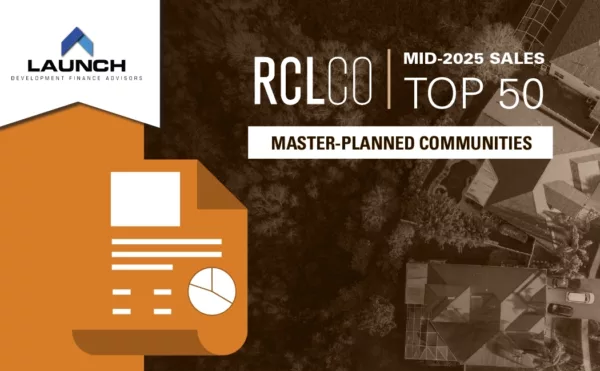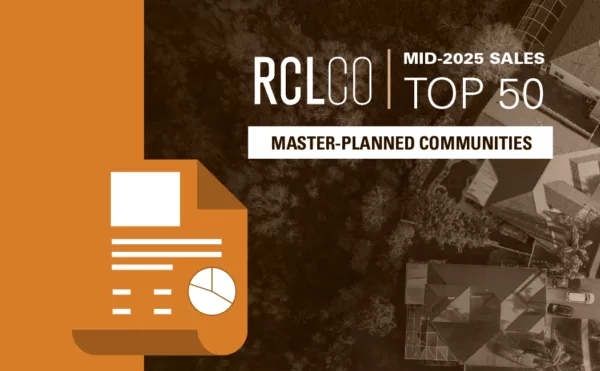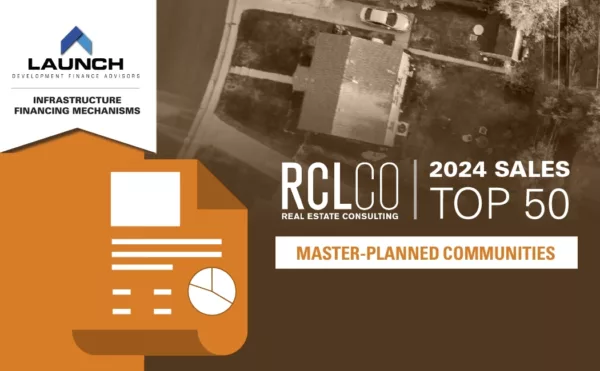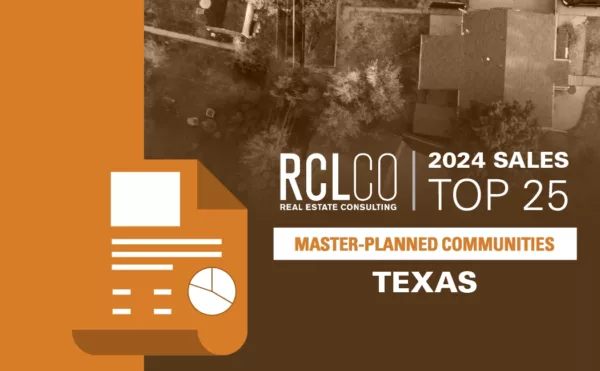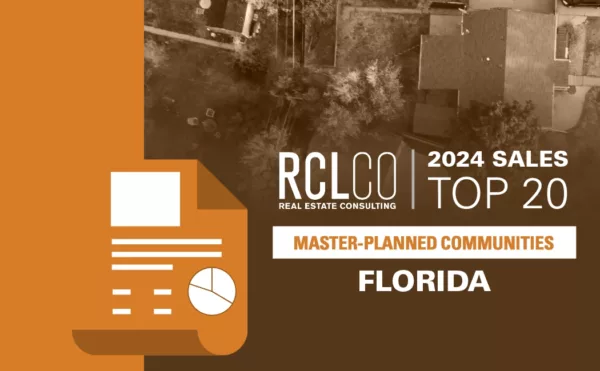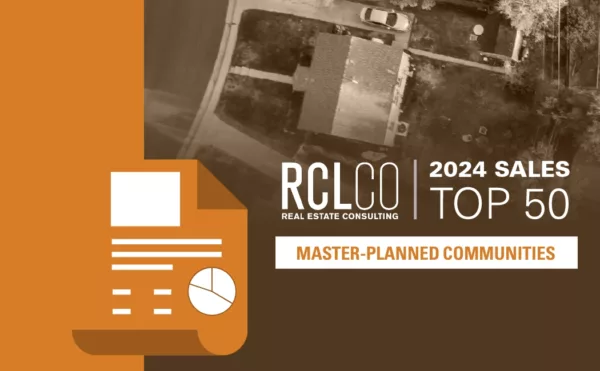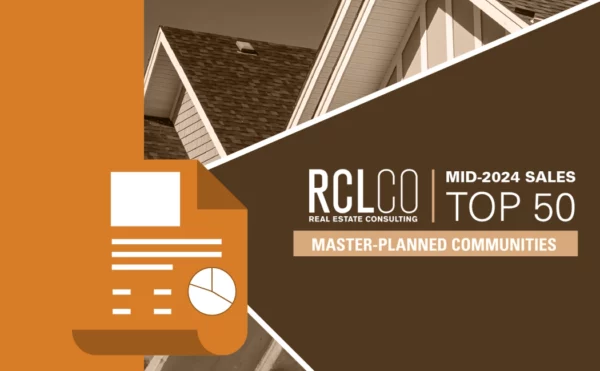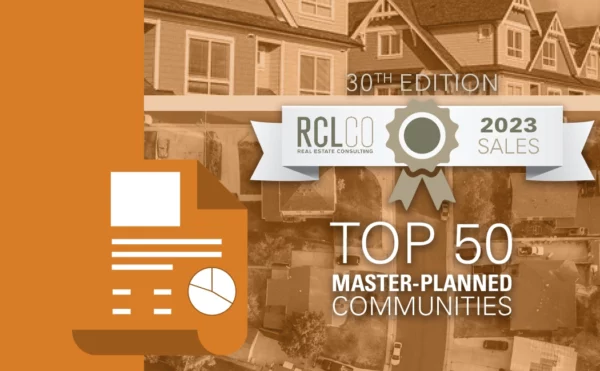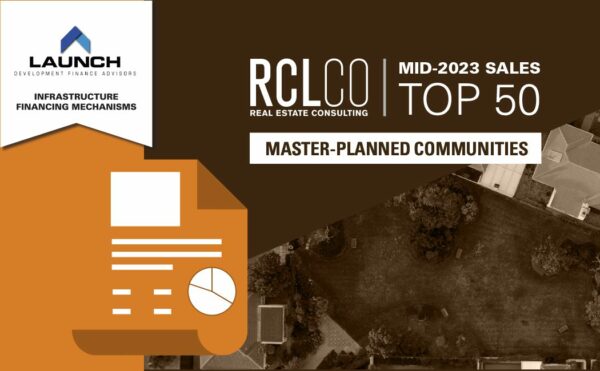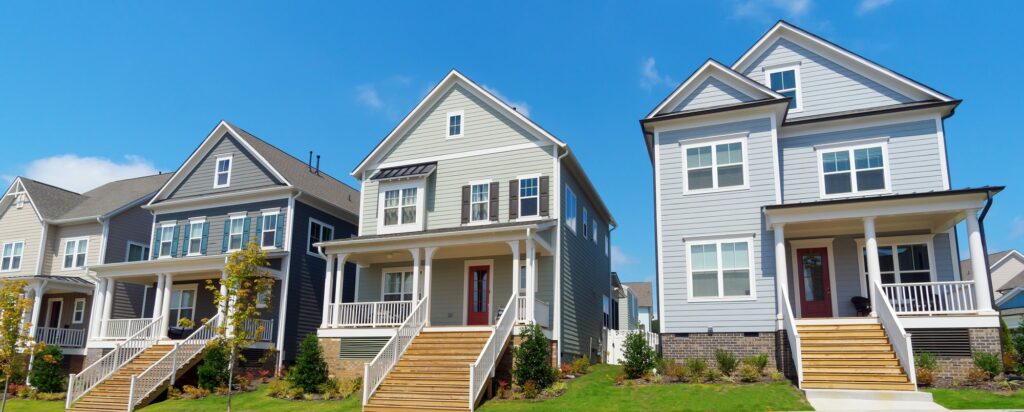
July 12, 2021
In Summary
- The top-selling community in the country is Sarasota, Florida’s Lakewood Ranch, with 1,535 sales through June, 83% ahead of last year’s pace.
- Home sales in the nation’s Top-50 exceeded expectations in the first half of 2021, with a pace that indicates the potential for a 12% increase at year’s end compared with 2020.
- This surge in new sales among the Top-50 is 20% above sales in the last mid-year report (note that MPCs which comprise the Top-50 change each year), and comes despite a tightening of new home inventory and reduced supply of components needed for new home construction.
- While many communities have indicated that builders are quickly running through lot allocations or even slowing new sales to meet existing needs, MPCs on this list still experienced an average individual increase of over 40% each compared to their prior period performance.
- 75% of sales within the Top-50 occurred in Florida, Texas, or Nevada. Florida was the top-ranked state in terms of total sales with 34%, followed by Texas with 30%.
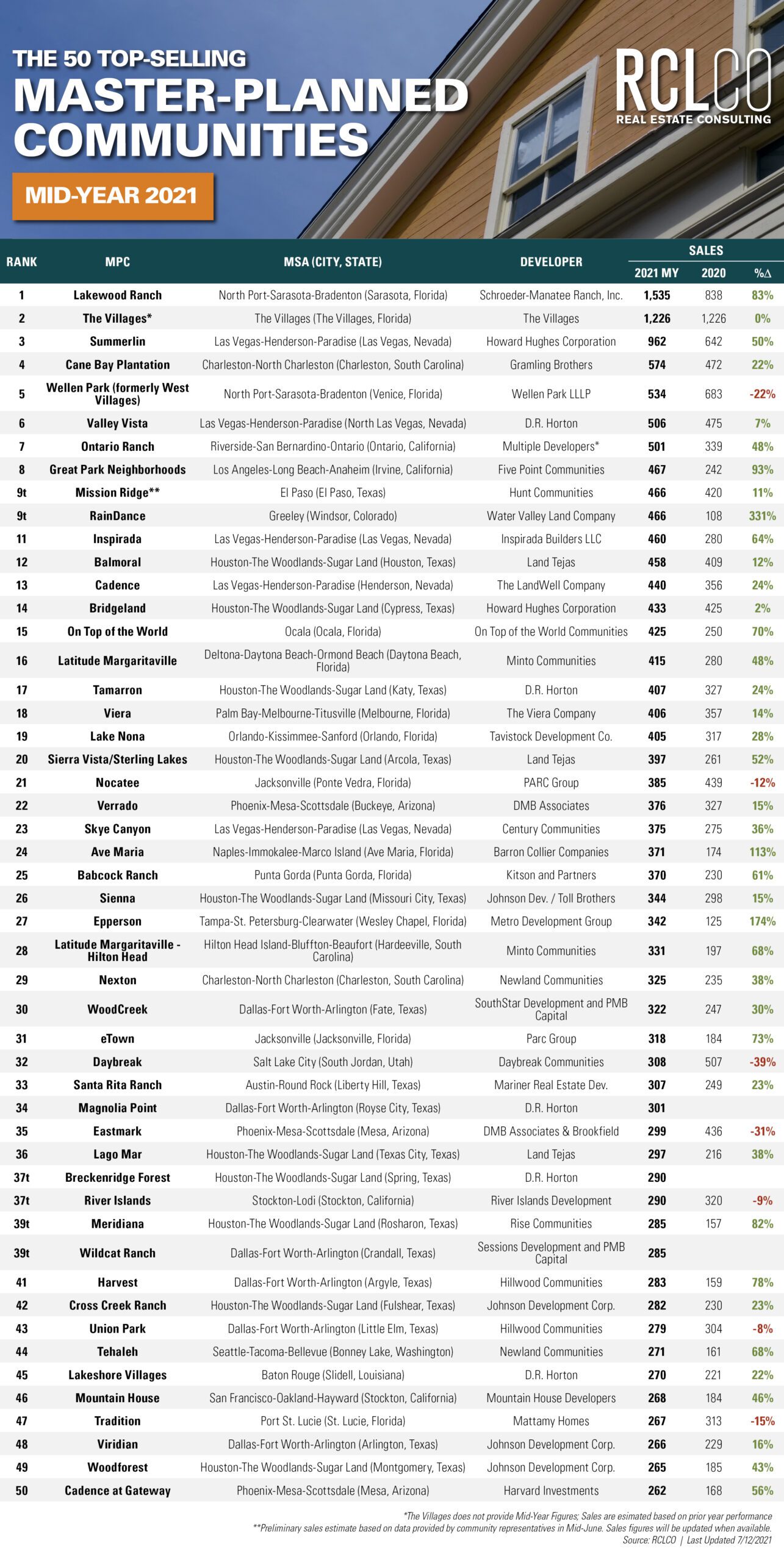
Every year since 1994, RCLCO has conducted a national survey identifying the top-selling master-planned communities (MPCs) through a rigorous search of high-performing communities in each state. This initiative exists not only as a way to commend the most successful communities in the country, but also as a tool for monitoring the overall health of the for-sale housing industry, a means of locating markets with the most significant residential momentum, a process for highlighting the trends affecting communities large and small, and a medium through which to learn development best practices and pass along lessons gleaned from the MPCs that have pioneered their way into the top ranks. In this publication for mid-year 2021, we have surveyed MPCs throughout the country to update the rankings of The Top-Selling Master-Planned Communities of 2020.
The chart above summarizes RCLCO’s list of the 50 top-selling communities through the first half of 2021, including a comparison with their 2020 mid-year new home sales where applicable. While this year has thus far been emblematic of widespread MPC success and surging new home demand, Sarasota, Florida’s Lakewood Ranch has been a stand-out performer. With 1,535 sales, Lakewood Ranch claims the top spot, representing a pace that is 83% ahead of its performance during the same time period last year. The Villages, which ranked first overall in last year’s rankings, does not participate in Mid-Year updates and declined to provide sales information for this publication and RCLCO estimates based on its past sales and current trends that The Villages is the second fastest-selling community in the country through June of this year with at least 1,200 sales. Las Vegas, Nevada’s Summerlin is ranked the third overall in our survey with 962 sales, representing a 50% increase over the pace set during the same time period last year.
“Lakewood Ranch has been a perennial pack leader by delivering the features which epitomize top-selling MPC’s: consumer-centric homes, well-integrated natural areas, abundant amenities, and a vast array of lifestyle offerings. The community’s multi-generational offerings and access to open space delivered on two key criteria sought by buyers relocating from urban areas during the pandemic, often with extended family and friends. This compounding effect accelerated sales in the first half of the year. Managing buyer expectations in this highly competitive environment in a sensitive and productive manner has been central to our success.
– Rex Jensen, President & CEO, Schroeder-Manatee Ranch, Inc.
Home sales in the nation’s 50 top-selling master-planned communities (MPCs) exceeded expectations in the first half of 2021, with a pace that indicates the potential for a 12% increase at year’s end compared with 2020. This surge in new homes sales among the Top-50 is nearly 20% above sales shared in the last mid-year report (note that the communities within the Top-50 change each year), and comes despite a tightening of new home inventory and reduced supply of components needed for new home construction. While many communities have indicated that builders are quickly running through lot allocations and in some cases slowing new sales to meet existing needs, MPCs on this year’s Top-50 list still experienced an average individual increase of over 40% each compared to the same time frame last year.
The MPC Sector Looks Past the Pandemic Era as New Challenges Emerge for Master-Planned Communities
Much can change in 365 days, and nowhere is that more apparent than with the concerns and forward-looking projections of Master-Planned Community Developers. In July 2020, RCLCO’s Mid-Year Top-Selling MPC report highlighted the state of a market clawing its way back from a historic slump in sales caused by a global pandemic. At that time, buyers that had deferred their home purchase decisions in March and April had begun returning to the market, but significant uncertainty still remained as to how much demand could return while COVID-19 continued to cause seismic shifts in every aspect of the daily lives of consumers.
Fast forward to July 2021, we are now experiencing challenges that are the diametrical opposite of early 2020. New home demand which began to surge back in mid-2020 has only accelerated, owing to the prolonged experience of pandemic lockdowns and working from home which has led consumers to seek additional space, coupled with historically low interest rates and demographic tailwinds as the large millennial generation enters peak family formation years and transitions toward single-family living. Lakewood Ranch reports that buyers state they are looking to move close to family and friends, downsizing, or accelerating retirement. Year-over-year, Lakewood Ranch experienced the largest sales gains in the entry/1st move up segment (84% growth over prior year) which generally leans towards millennials. The empty nest/active adult market jumped by 71% at Lakewood Ranch during this period, and 2nd home move-up/luxury buyers increased by 57%.
These trends appear to validate sentiments echoed in RCLCO’s Mid-Year 2021 Sentiment Survey, where the majority (88%) of respondents indicated that national real estate conditions were moderately or significantly better when compared with one year ago. Professionals across the industry were polled about their perspective on the current state of various product types, and most indicated that their outlook for the remainder of the year was quite bullish, with 75% of respondents predicting that national real estate market conditions would be “moderately” or “significantly” better in the next year.
However, surging demand has been met with shortages of new supply, both in terms of new home inventory as well as the supply of components necessary for new home construction, which has led to slowing in the home buying process in some places. Conversations with representatives of the Top-Selling Master-Planned Communities indicated that builders are quickly running through lot allocations in many communities and, in some cases, they are capping monthly sales in order to ensure existing customer needs can be met. 7 out of 10 respondents in RCLCO’s Mid-Year 2021 Sentiment Survey indicated that rising construction costs were having an impact on the real estate market where they are active, with another 24% indicating a moderate impact. While that survey was conducted during the recent high point of lumber prices, which have trended down in recent weeks, cost pressures remain widespread and will be an important issue to watch in the coming months.
Positive Outlook for the Second Half of a Strong Year of Sales
As noted early in this report, the sales pace set by this mid-year’s Top-50 MPCs indicates the potential to eclipse 2020 sales by over 11% at year’s end. We expect the demand for new homes to continue to be strong for the remaining months of 2021, which bodes well for Master-Planned Community developers that can rise to meet that demand. This is a particularly important caveat, given the supply chain constraints that have been a significant challenge for builders in many communities. In fact, those communities in this year’s rankings that experienced a decline in sales have explicitly noted the cause as being related to a lack of new home inventory or the supplies their builders needed to deliver new homes, as opposed to a lack of demand.
Another key issue moving forward is likely to be housing affordability, as the confluence of strong demand, limited supply, and rising materials cost has led to significant increases in the price of new homes. While we expect that the current supply chain constraints will be gradually resolved over the next one to two years, helping to alleviate the limited supply and rising materials cost variables in the housing affordability equation above, it remains unclear how significantly this price appreciation will impact sales of the Top-50 MPCs moving forward.
What is clear, however, is that master-planned community developers that are able to mitigate affordability issues by refining their segmentation strategies to target a diverse array of market audiences through specific product and pricing programs will be the big winners in the Top-Selling Master-Planned Communities Report of 2021 to be released later this year.
The ranking of 2021’s Mid-Year Top-Selling Communities is based on total net new home sales as reported by each individual community. Preliminary sales numbers were provided by communities beginning in late June, with final sales figures being updated periodically throughout July. To be included in our ranking, MPCs must have a number of features. True MPCs are developed from a comprehensive plan by a master developer, and incorporate a variety of housing types, sizes, and prices, with shared common space, amenities, and a vital public realm. The best examples of MPCs are developed with a strong vision and comprehensive plan that guide development and unify the community through distinctive signage, wayfinding, entry features, landscaping, and architectural/design standards. Beyond the built environment, MPCs differentiate themselves from typical suburban subdivisions in that they provide a means for interaction among neighbors in the sense of the word “community.” They foster an environment within which generations can live better in terms of housing and the community environment, and many offer educational opportunities, neighborhood shopping and services, and even employment centers to complement the residential neighborhoods. Although rooted in a vision, the most resilient MPCs have flexible master plans that are environmentally sensitive, market-responsive, and nurture the lifestyles of their residents.
Given the above criteria, we do not include the collective sales of multiple, separate communities that are unified only through marketing efforts rather than a preconceived community vision, nor do we include communities that are a collection of subdivisions that have few unifying elements other than the name.
RCLCO provides real estate economics, strategic planning, and management consulting to real estate investors, developers, home builders, financial institutions, public agencies, and anchor institutions. Our real estate advisors help clients make the best decisions about real estate investment, repositioning, planning, and development. Interested in learning more about RCLCO’s Master-Planned Community Services? Please visit us at www.rclco.com/master-planned-communities-services/.
Article and research prepared by Gregg Logan, Managing Director, and Karl Pischke, Vice President.
Additional research support was provided by Tyler Fischer, Jake Kirschner, Devansh Shah, and Eric Whinnen.
Disclaimer: Reasonable efforts have been made to ensure that the data contained in this Advisory reflect accurate and timely information, and the data is believed to be reliable and comprehensive. The Advisory is based on estimates, assumptions, and other information developed by RCLCO from its independent research effort and general knowledge of the industry. This Advisory contains opinions that represent our view of reasonable expectations at this particular time, but our opinions are not offered as predictions or assurances that particular events will occur.

